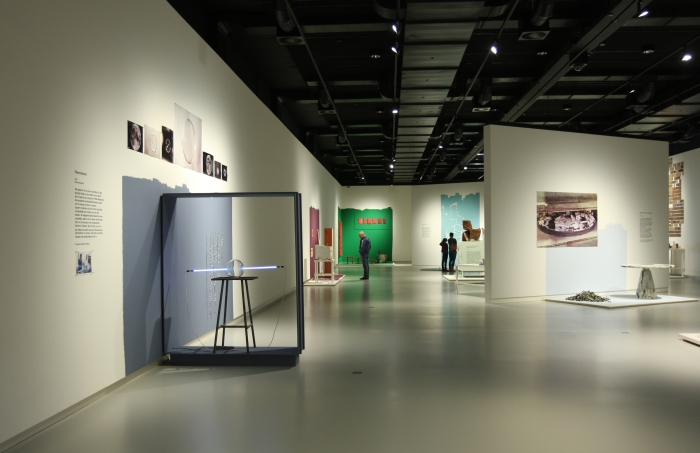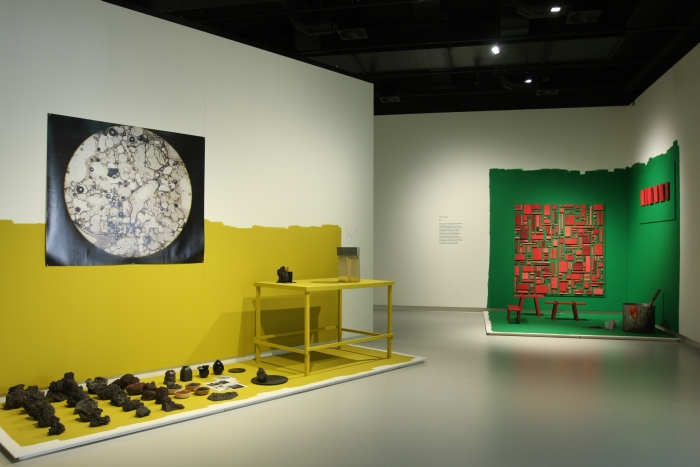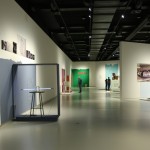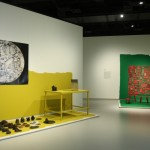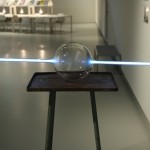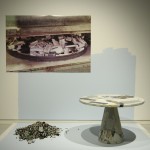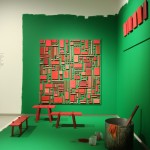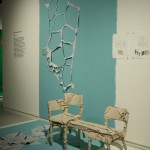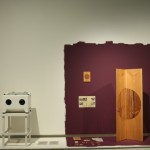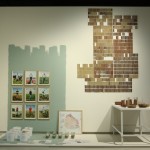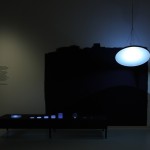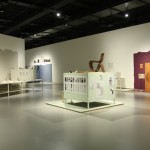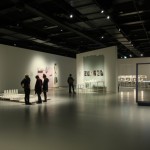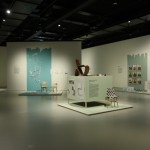How We Work, new Dutch Design at the Stedelijk Museum ‘s-Hertogenbosch
Interesting as many design objects unquestionably are, the story of their development is invariably more interesting.
Especially in the case of contemporary Dutch design objects, for as we noted in our post on the exhibition Domestic Affairs – New Voices in Dutch Design in Cologne, there are currently only very few designers in Holland who simply produce objects. Rather contemporary Dutch designers tend to develop concepts that, occasionally, result in objects. Needn’t however. A fact which tends to make the development process more narrative and heterogeneous than is the case in more classical product design.
Until May 17th insights into the multifarious nature of such design processes, the type of decisions designers have to make and the problems that need to be overcome in realising a project and/or developing a concept are being presented in the exhibition How We Work, new Dutch Design at the Stedelijk Museum ‘s-Hertogenbosch.
Curated by Tatjana Quax from Amsterdam based Studio Aandacht, How We Work, new Dutch Design presents fourteen projects which stand as representative for “a new wave in Dutch design”: an exhibition concept which obviously implies being able to define what you understand by “a new wave.” Tatjana Quax and the Stedelijk Museum have chosen to focus on works which explore the “role and function of design in a world full of excess”, and more specifically the organisers have placed an emphasis on projects which focus on a combination of traditional crafts with new production processes and which promote reuse rather than recycling.
Projects such as Dirk vander Kooij’s ever genial Melting Pot Table, a project which began as a way of reusing the waste generated in the course of Dirk’s research and production work and which has evolved into a deceptively simple method for reusing plastic waste. The version on show in How We Work having been created from the melted plastic remains of computers and typewriters salvaged from the former Scryption Museum in Tilburg and thus endowing the resultant table with the most delightful post-industrial grey tones.
Similarly Pepe Heykoop’s Skin Collection project in which salvaged furniture is upholstered with remnants of leather from industrial furniture production to create new objects with a charmingly disorientating sense of vague familiarity is based on a relatively simple concept, yet one which posses a depth which belies its superficial simplicity.
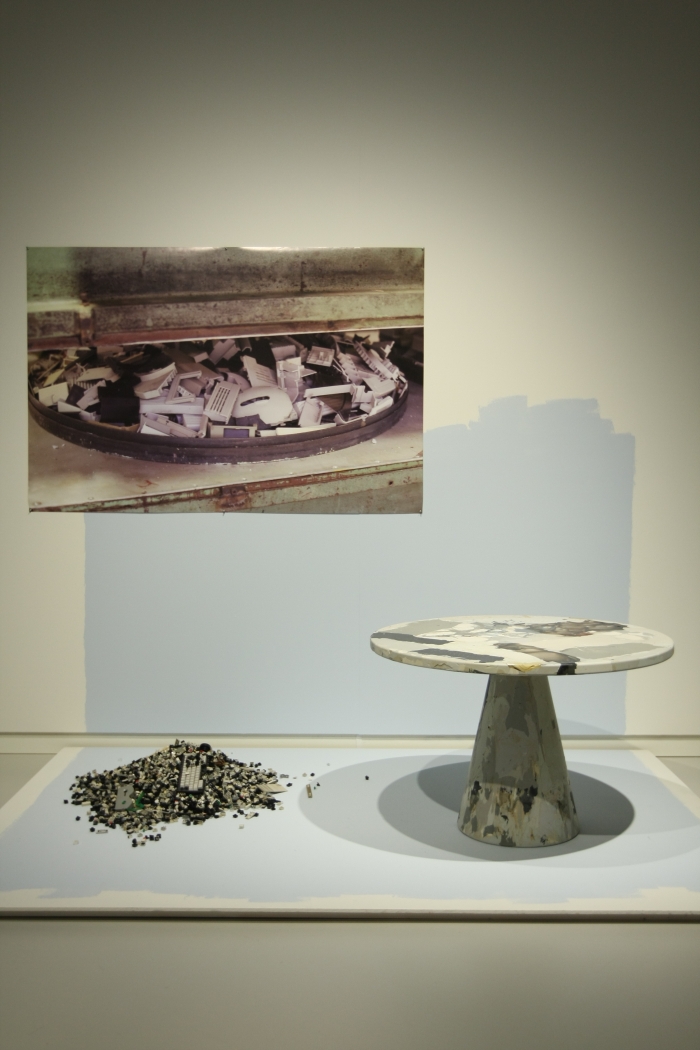
Melting Pot Table by Dirk vander Kooij, as seen at How We Work, new Dutch Design, Stedelijk Museum ‘s-Hertogenbosch
Being an exhibition about contemporary Dutch design conceptual and experimental projects obviously feature heavily. Red Wood from Eindhoven based design studio rENs, for example, explores how different wood species absorb red pigment. Why you’d want explore that is naturally a question many will, and indeed should, pose. But sometimes the why is less important than the what, and despite the admittedly abstract background to the project itself, the resulting table collection featuring objects of different sizes and forms in the various woods and so individual tones is absolutely charming.
Equally abstract in its origins yet charming in its outcome is Drawn from Clay – Noordoostpolder by Lonny van Ryswyk and Nadine Sterk a.k.a Atelier NL. In the course of a project which wouldn’t look out of place in the Myvillage‘s portfolio Atelier NL took clay samples from some 2000 fields in the so-called Noordoostpolder region of Holland from which tiles, crockery, tableware and similar accessories were subsequently created: each with a colour and texture unique to its location and as such endued with the emotion of place that transforms an industrially produced object into a treasured personal possession.
Yes, one could just make pottery in a range of clay tones and paint wood planks in different shades of red. But that, as we say, simply isn’t the sort of thing contemporary Dutch designers do. To be honest, we don’t believe it would even occur to anyone in Eindhoven that such was possible.
If the sort of thing contemporary Dutch designers do is sensible and meaningful, or indeed if it is actually still design, are however questions for another day.
How We Work, new Dutch Design does however also feature what one can refer to as more targeted, deliberately developed products, in particular Chris Kabel’s Blue Sky Lamp project which seeks to create a lamp which combats winter depression and Joris Laarman’s Makerchair, an open source 3D printed chair composed of 77 different elements and which can be freely adapted to create a personalised piece of self-producible, self-build furniture.
Elsewhere we were very taken with the interactive presentation of Diptych by Lex Pott which sees the softer summer rings sandblasted from a piece of Douglas Fir to leave just the harder winter rings and a visual impression that provides a whole new perspective on what wood actually is and Valentin Loellmann’s Fall/Winter Bench project which fascinated, and continues to fascinate, us even if to be honest we still don’t really understand it. We hope however to grasp it real soon.
And a special mention must go to Phenomenon by Pieke Bergmans, for us one of the genuine highlights of How We Work and a project which, well, makes light disappear. And then reappear.
In addition to presenting the fourteen projects How We Work also features an information table with a little more background on the designers while a series of short films about the designers and/or their work on constant loop in the ground floor auditorium perfectly compliments the exhibits.
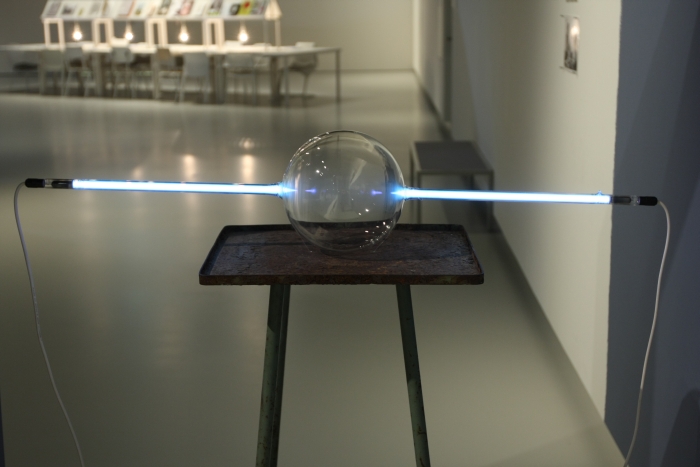
Phenomenon by Pieke Bergmans, as seen at How We Work, new Dutch Design, Stedelijk Museum ‘s-Hertogenbosch
A neatly formed, well conceived and very entertaining and informative exhibition How We Work, new Dutch Design for us falls however just a little bit short of that what it should be. For us too many of the projects are explained too briefly, yes we understand that in some cases there may not be that much more that can be conveniently visually presented in the confines of the exhibition space, but a little personal input from the designers would have been welcome: motivation, biggest problems, inspirations, most satisfying moments, lessons learned, errors made, assistance received. Then it would truly have been an exhibition about How We Work. As it is it is an excellent exhibition about What We Made.
And, and perhaps more importantly, a very accessible introduction to some very interesting protagonists of contemporary Dutch design.
In which context, the Stedelijk Museum is in the same complex as Het Noordbrabants Museum, thus easily allowing a visit to both How we Work, new Dutch Design and Design from the Country of The Potato Eaters – Designers meet van Gogh.
Buy the combi-ticket for both museums and make a day of it. That would be our tip.
How We Work, new Dutch Design runs at the Stedelijk Museum ‘s-Hertogenbosch, De Mortel 4, 5211 HV ’s-Hertogenbosch until Sunday May 17th
Full details can be found at http://www.sm-s.nl
- How We Work, new Dutch Design at the Stedelijk Museum ‘s-Hertogenbosch
- How We Work, new Dutch Design at the Stedelijk Museum ‘s-Hertogenbosch
- Phenomenon by Pieke Bergmans, as seen at How We Work, new Dutch Design, Stedelijk Museum ‘s-Hertogenbosch
- Melting Pot Table by Dirk vander Kooij, as seen at How We Work, new Dutch Design, Stedelijk Museum ‘s-Hertogenbosch
- Red Wood by rENs, as seen at How We Work, new Dutch Design, Stedelijk Museum ‘s-Hertogenbosch
- Skin Collection by Pepe Heykoop, as seen at How We Work, new Dutch Design, Stedelijk Museum ‘s-Hertogenbosch
- Diptych by Lex Pott, as seen at How We Work, new Dutch Design, Stedelijk Museum ‘s-Hertogenbosch
- Drawn from Clay – Noordoostpolder by Atelier NL, as seen at How We Work, new Dutch Design, Stedelijk Museum ‘s-Hertogenbosch
- Blue Sky Lamp by Chris Kabel, as seen at How We Work, new Dutch Design, Stedelijk Museum ‘s-Hertogenbosch
- How We Work, new Dutch Design at the Stedelijk Museum ‘s-Hertogenbosch
- How We Work, new Dutch Design at the Stedelijk Museum ‘s-Hertogenbosch
- How We Work, new Dutch Design at the Stedelijk Museum ‘s-Hertogenbosch
Tagged with: 's-Hertogenbosch, How We Work new Dutch Design, Stedelijk Museum
